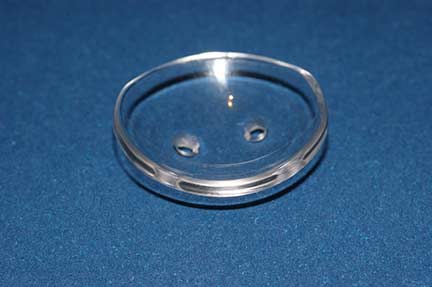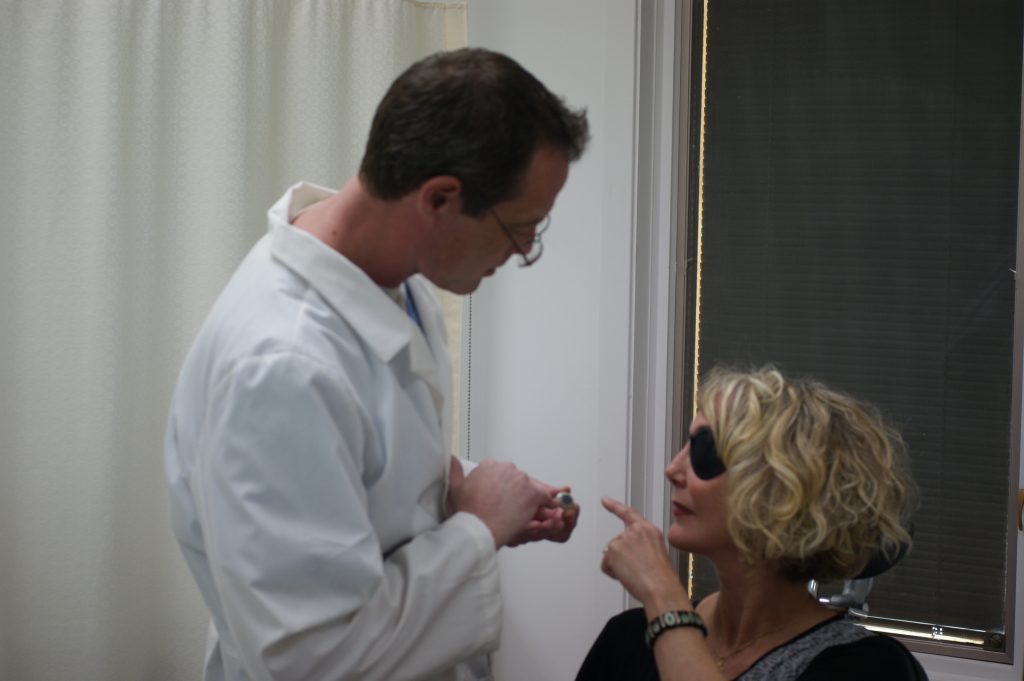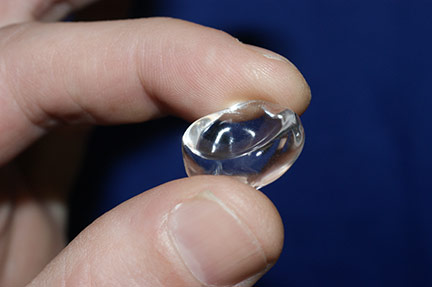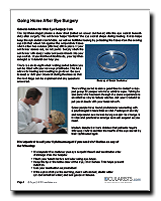General Advice for After Eye Surgery Care
The Ophthalmologist places a clear shell (called an ocular conformer) into the eye socket immediately after surgery. The conformer helps “conform” the eye socket shape during healing. It also helps keep the eye socket comfortable, as well as facilitate healing by protecting the tissue from the moving eye lids that would rub against the conjunctival tissue which often has sutures (stitches) still in place.
If your conformer comes out, do not panic. Simply wash the conformer with soapy water and place it back into your eye socket. If you find this difficult to do, your Ophthalmologist or Ocularist can help you.


There is a six-to-eight-week waiting period before you can be fitted with your new eye prosthesis. This time allows for healing and swelling to go down. Be sure to meet or visit your Ocularist during this time so that the next stage can be explained and any questions answered.
This waiting period is also a good time to contact a support group for people who have artificial eyes. Talking to someone who has been through the same experience is an effective way to reduce worries. Ask your Ocularist to put you in touch with your local network.
Some people have found professional counseling with a psychologist is beneficial as well. Feelings of anxiety and depression are normal during a major life change. It is wise and practical to arrange as much support as you need.
Modern standard of care dictates that patients require follow-up visits to monitor the health of the eye socket by their Ophthalmologist.
It is important to call your Ophthalmologist if you need clarification on any of the following:
- It is important to continue your eye drops/ointment and medication after discharge from the hospital.
- Wash your hands before and after using eye drops.
- Keep the tip of the bottle clear of the eye, lid or lashes. This helps prevent infection.
- Use your medication as prescribed.
- If the eye is sticky in the morning, clean with cooled, sterile water (or cooled boiled water) and soft gauze or tissues.
Some symptoms need urgent medical attention. See your doctor if you have any:
- Sharp or severe eye pain
- Severe headaches
- Significant discharge from the eye, in particular, bleeding or discoloration, increasing redness in the eye and excessive tears
- Depending on the degree of severity, if your doctor is not available, you might also call a hospital eye clinic or visit an Emergency Room (ER).
Caring for your Eye / Eye Socket After Eye Surgery
The first challenge is to become confident in looking after the eye and/or eye socket. It is normal for patients to be upset with their unfamiliar situation, but your local Ocularist will be committed to helping you through this time of change. In a very short time most patients become relaxed and confident managing their artificial eye.
For two weeks after the operation it is recommended that you:
- Wear glasses for protection
- Avoid heavy lifting
- Avoid rubbing the eye
- Avoid bending forward to do things
- Avoid washing your hair with your head bent forward
- Avoid any hit to the eye
- Keep your follow-up appointments, bringing all eye drops with you when attending your eye clinic
- Avoid using the same tissue for both eyes. Always use separate tissues for each eye and dispose of them after each use
Driving
Individuals should check with their insurance company to clarify their policy on driving after eye surgery. Some require a waiting period of three months.
Intra-Healing Custom Ocular Conformer
For some patients the Ophthalmologist will work with the Ocularist to make a temporary artificial eye which functions as a intra-healing custom ocular conformer (worn while your eye socket is still healing). Sometimes a custom conformer is made after the eye socket has fully healed (six to eight weeks after surgery), instead of creating an eye prosthesis first. In this case the device would be considered a post-healing custom conformer and created when the Ocularist wants to shape the fornices (pockets of the eye under the lids) and other areas of the eye socket in preparation for the eye prosthesis so the final prosthesis will fit properly and look as natural as possible. Usually custom conformers (both intra and post healing types) are created out of clear acrylic so the Ocularist can see the tissue behind it during evaluation.


